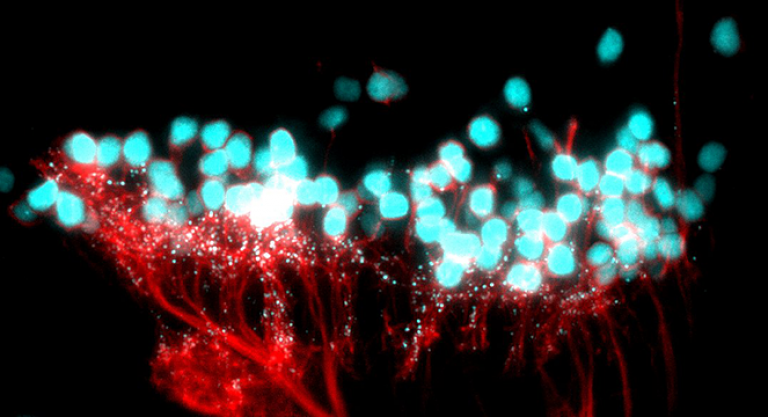Anya Suppermpool and the Rihel Lab show early sleep phase resets zebrafish brain connections
8 May 2024
During sleep, the brain weakens the new connections between neurons that had been forged while awake – but only during the first half of a night’s sleep, according to a new study in zebrafish larvae by UCL scientists from CDB's Rihel Lab.

The researchers say that their findings, published in Nature, provide insight into the role of sleep, with the study supporting the 'Synaptic Homeostasis Hypothesis' - a key theory on the purpose of sleep, which proposes that sleeping acts as a reset for the brain. But their research still leaves an open question around what function the latter half of a night’s sleep serves.
Lead author, Professor Jason Rihel, explains: “When we are awake, the connections between brain cells get stronger and more complex. If this activity were to continue unabated, it would be energetically unsustainable. Too many active connections between brain cells could prevent new connections from being made the following day. While the function of sleep remains mysterious, it may be serving as an ‘off-line’ period when those connections can be weakened across the brain, in preparation for us to learn new things the following day.”
For the study, the scientists used optically translucent zebrafish, with genes enabling synapses (structures that communicate between brain cells) to be easily imaged. The research team monitored the fish over several sleep-wake cycles.
They found that brain cells gain more connections during waking hours, and then lose them during sleep. This process this was dependent on how much sleep pressure (need for sleep) the animal had built up before being allowed to rest; if the scientists deprived the fish of sleep for a few extra hours, then the connections continued to increase until the animal was able to sleep.
Jason Rihel added: “If the patterns we observed were to hold true in humans, then our findings suggest that this remodelling of synapses might be less effective during a mid-day nap, when sleep pressure is still low, rather than at night, when we really need the sleep.”
The team, which included UCL CDB's Declan Lyons and Elizabeth Broom, also found that these rearrangements of connections between neurons mostly happened in the first half of the zebrafish’s nightly sleep. This mirrors the pattern of slow-wave activity, which is part of the sleep cycle that is strongest at the beginning of the night.
First author Dr Anya Suppermpool (UCL's CDB and Ear Institute) remarked: “Our findings add weight to the theory that sleep serves to dampen connections within the brain, preparing for more learning and new connections again the next day. But our study doesn’t tell us anything about what happens in the second half of the night. There are other theories around sleep being a time for clearance of waste in the brain, or repair for damaged cells – perhaps other functions kick in for the second half of the night.”
 Close
Close

